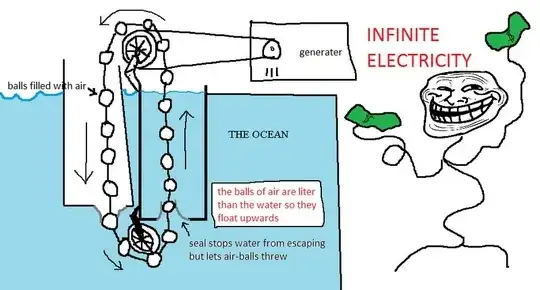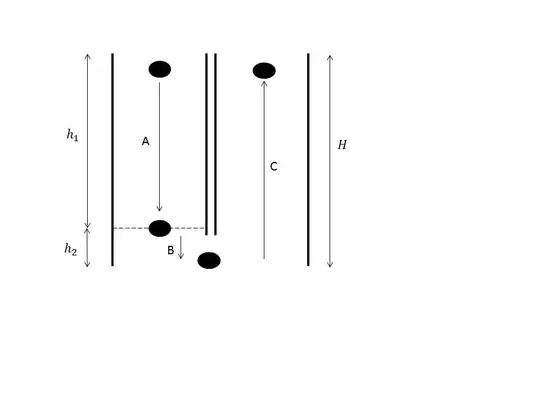Let's follow one particular ball all the way around. The ball will enter the water well below the surface. The pressure there is much higher than at the surface, so we need to do a lot of work just to push the ball into the water. It's so much work that it cancels all the work that ball will do as it floats upward on the other side, giving no net work gained as the ball makes a complete circuit.
Let's see this mathematically. We can ignore the gravitational force on the ball since gravity pulls down as much as up as you traverse the loop; we will focus on just the buoyant force and the force needed to push the ball into the water.
If the ball enters the water at depth $d$, the pressure is $g \rho d$ with $g$ gravitational acceleration and $\rho$ the density of water.
The work done to submerge the ball is then the pressure times its volume, or
$$W_{\rm submerge \; ball} = g \rho V d.$$
The force upwards on the ball is the weight of the water it displaces, which is $g \rho V,$ and the work the water does on the ball as it floats upward is this force times the distance the ball floats upward, or $$W_{\rm buoyancy \to ball} = g \rho V d.$$
We can now see that
$$W_{\rm submerge \; ball} = W_{\rm buoyancy \to ball},$$
meaning that as the ball goes around, we'll have to do just as much work on it as we will get back, so the ball doesn't give us any free energy in a complete loop.
The picture shows many balls, not just one. If we imagine the entire apparatus making a loop, though, each ball will make one full loop, and each ball will contribute zero net work, so the entire device contributes zero net work. Depending on the exact starting state, we might be able to get a little work out of it until the next ball reached the water, but you couldn't make it run and run forever.
Note: There are more small effects we could account for, e.g. the pressure changing slightly during the process of submerging the balls, the buoyancy of the air, etc. You can add more details like this into the analysis, but the basic conclusion will remain unchanged.

